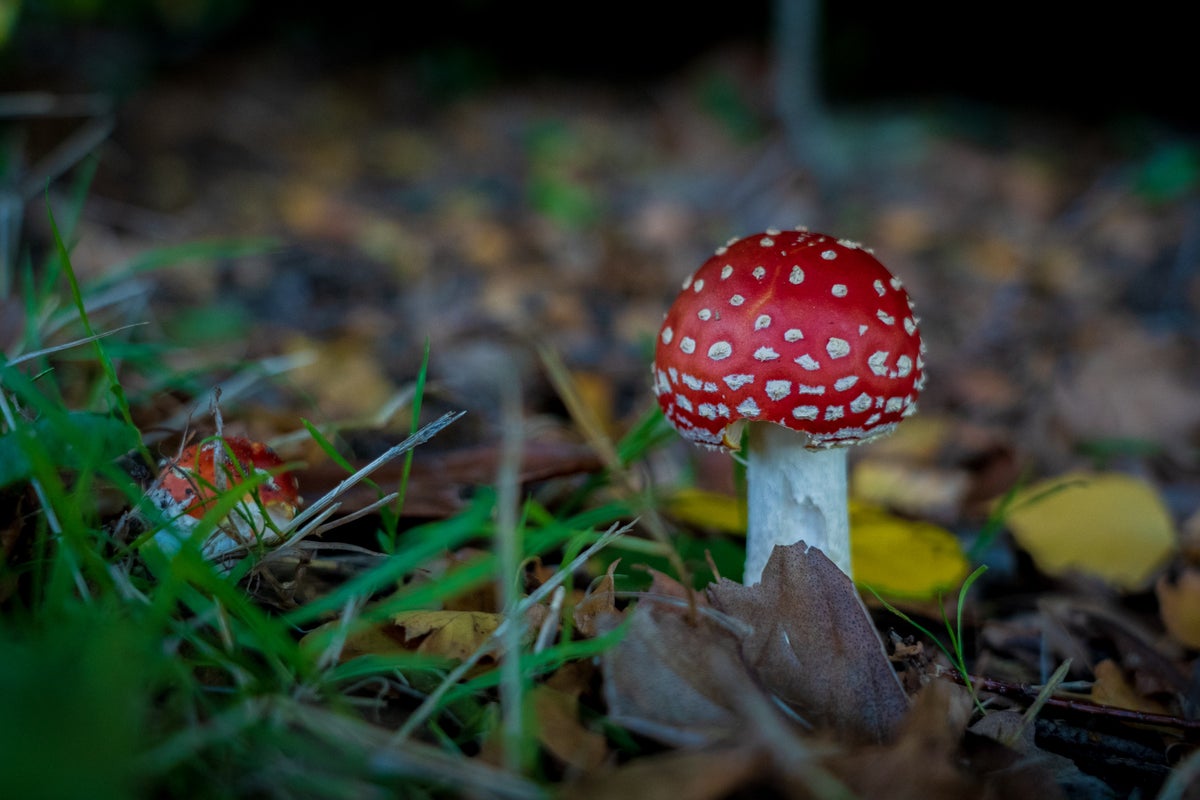This article was originally published on Leafly and appears here with permission.
Across the country, Americans looking for a legal alternative to psychedelic mushrooms have set their sights on amanita muscaria, the colorful mushroom known as fly agaric. It’s quickly gaining a reputation as the delta-8 of shrooms: Psychoactive but not outlawed.
With the exception of Louisiana, amanita muscaria can be purchased online and shipped anywhere in the country. The firetruck-red mushroom doesn’t contain psilocybin, but instead a different psychoactive compound called muscimol.
Lower hallucinatory effects
Experts say that muscimol tends to elicit less hallucinatory effects than the psilocybin and psilocin in other entheogenic mushrooms.
“[Amanita muscaria] chills you out,” James McConchie, an educator and advocate, as well as the owner of San Francisco’s Haight Street Shroom Shop and a co-founder of Decrim SF, told Leafly.
McConchie compared its effects to ketamine. “In low levels,” he said, “it’s not a numbing agent per se, but it’s like an anesthetic a little bit. When you get into higher doses of it, you can get into a stupor or drowsiness.”
Different forms of ingestion
While the retail industry for amanita has only recently taken a step into the mainstream, Indigenous peoples—particularly in Siberia and current-day Scandinavia—have embraced it for centuries. To avoid its toxic effects, they fed the mushroom to reindeer and then drank their psychoactive—and detoxified—urine in order to experience its effects.
These days, retailers like Psilo Mart typically sell amanita muscaria extract as a powder, capsule, or edible. (Sorry, no go on the reindeer piss.) Adults can purchase products online, or at a single brick-and-mortar store: Chillum in Tampa Bay, Florida.
Retailers typically sell amanita muscaria products in microdose form. In other words, a single capsule or gummy isn’t intended to give consumers a full-on, psychoactive trip. Instead, microdoses should induce mild, soothing effects.
Yet my recent experiences with amanita muscaria revealed that even a microdose product can instill stronger effects than expected, or desired.
A capsule for an autumn hike
For my first amanita muscaria experience, I took a microdose capsule containing 350mg of amanita extract just before starting a day hike in the Rocky Mountains. The extract possesses roughly one-quarter the potency of psilocybin.
The capsule provided an extremely pleasant and mild experience. Less than an hour after I swallowed it, I felt a clear-headed, gentle buzz take effect. As my friends and I scaled a series of switchbacks, exposing a gleaming expanse of snow-capped peaks to the south above the trees, I felt immensely cheery and calm.
A few miles later the trail brought us to a lookout, where I had a serendipitous encounter with a local cannabis dispensary owner, who kindly offered a puff of his Gary Payton joint.
The cannabis elevated the effects of the mushroom considerably. About fifteen minutes later, I felt considerably more euphoric. I didn’t experience any hallucinatory effects, but noticed that the sun-dappled path and flora radiated a particularly bold brightness. That super-positive vibe fueled me through the entire day, like Harry Potter after sipping on a vial of Liquid Luck.
The gummy did a number on me
I was sold on amanita muscaria, and was keen to enjoy another stroll down that gentle, mildly psychoactive road.
A few days later, I popped a pleasantly dense and chewy amanita gummy into my mouth. It was a Sunday morning. I figured I was in for a similar experience. I was looking forward to a walk across town to the library and some reading in the sun.
But that was not what the amanita gummy had in store for me.
I’m not sure of the cause—my empty stomach, a variation in the dosage, or a combination of the two—but I was not prepared for what happened next.
Seriously tripping
The trip came on within thirty or forty five minutes. While, at its peak, the previous capsule had put a little pep in my step, the gummy quickly induced substantial hallucinations. A quick walk with my dog illuminated paths through the neighborhood park that I never knew existed as the trees glowed with a surreal, Mario-esque brightness. A kaleidoscope of otherworldly colors sprang forth behind my closed eyes. My short-term memory disappeared like water down a drain.
I retained enough perspective on the situation to chuckle about it. I desperately wanted to chalk it up to a silly SNAFU and get on with my day. But as anyone who’s had a challenging experience with psychedelics can tell you, resisting its effects rarely goes well.
When I got home from the walk, I laid down on the living room floor and spent considerable time staring at the houseplants. A series of distressing images and existential thoughts swirled through my head. The trip also induced significant physical shaking and cold sensations. My hands largely went numb.
Those symptoms lasted between two and three hours. Eventually I went out on the porch and played Tetris on my phone in the waning afternoon sun until my mind began to settle.
Reflecting on two very different experiences
Personally, I tend to believe that even uncomfortable psychedelic experiences can be beneficial. That was certainly the case for me and the amanita gummy. Even though the trip had been distressing, I processed some of the anxieties it surfaced in the following days with my therapist, to extremely constructive ends.
While my sample size—one mellow experience, one intense experience—is small, the takeaway was clear: Even if you plan to microdose, open yourself to the possibility of a stronger experience. Otherwise, you may find yourself in unexpectedly turbulent waters.
Image and article originally from www.benzinga.com. Read the original article here.

